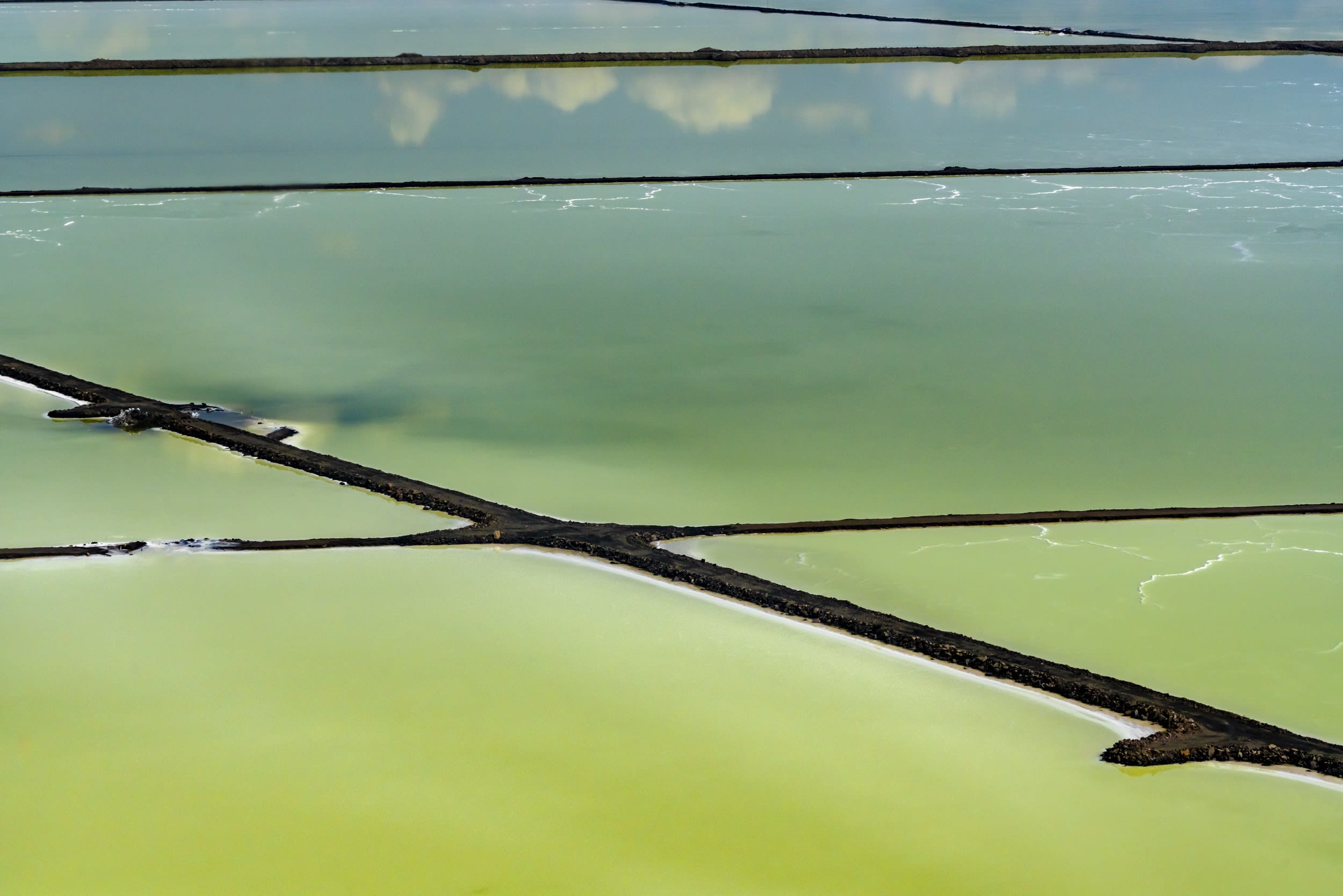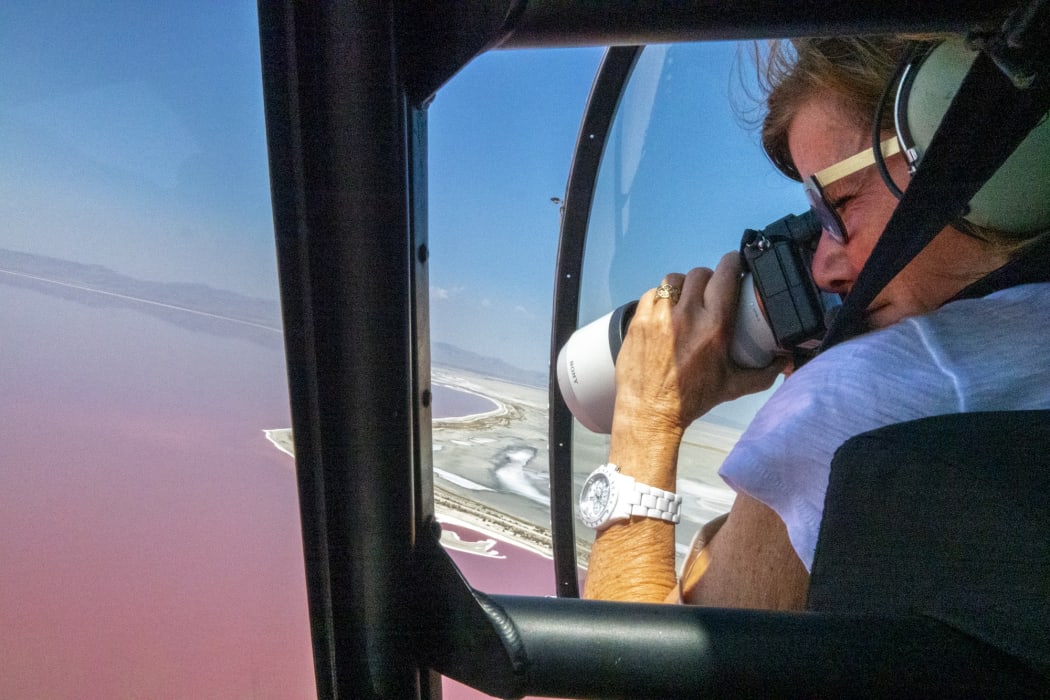
As a contribution to the crucial Great Salt Lake conversation, Modern West has showcased Lake Effect, a six-person exhibition with artworks depicting the current state of our Great Salt Lake’s decline along with the detrimental aftermath that may occur if nothing is done to protect the place many of us call home.
Diane Tuft is a photographer currently based in New York City. Tuft has always been fascinated by how environmental factors shape the Earth’s landscape, and capturing this through her camera has been a guiding principle in her work. In her photography series titled Entropy, Tuft explores how many areas of the Great Salt Lake are visually changing and rapidly drying. This series questions what may happen locally and globally if the lake soon dries up.
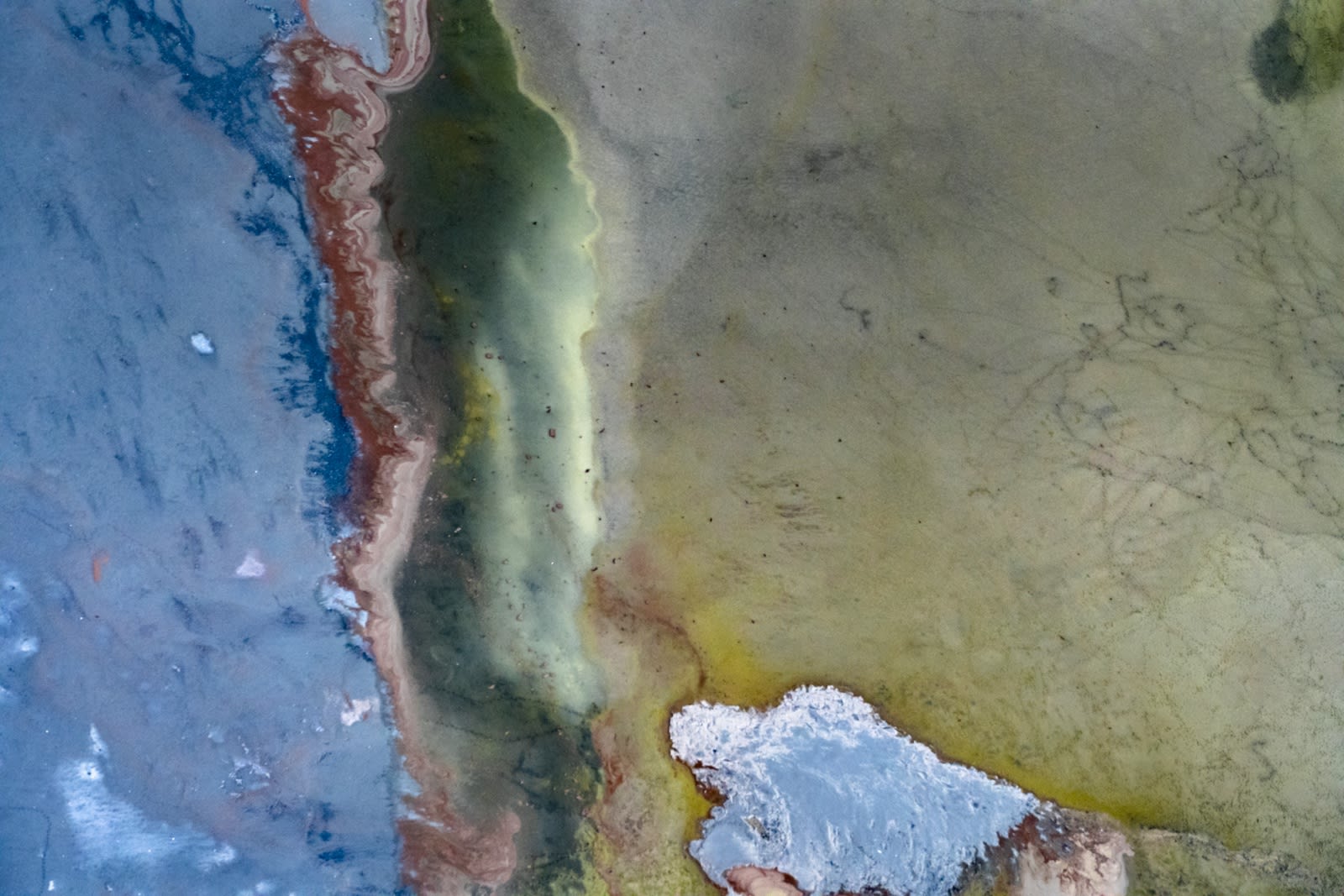
I have always been fascinated by the philosophy and work of Robert Smithson and had been longing to visit the Spiral Jetty for years. To me, Robert Smithson was an artist’s artist, establishing the idea that art could exist outside of a museum and that it could be one with nature. This is the core of my beliefs and work. In June of 2005, I arranged with the Dia Foundation to photograph the Jetty. At that time, I was exclusively using high-speed infrared film to capture infrared radiation. I was curious what salt, basalt rock and water would look like in infrared photographs.
At that time, it was difficult to get infrared film through airports since the film cannot be opened in light or x-rayed. Reluctantly, I decided to purchase a digital color camera to alleviate these difficulties.
Hikmet Lowe (Dia Foundation) and I flew by helicopter to spend the day on the Spiral Jetty photographing the abstractions that I would discover. While flying at that low altitude, I could not help but use the digital camera to photograph the amazing colors that I was witnessing.
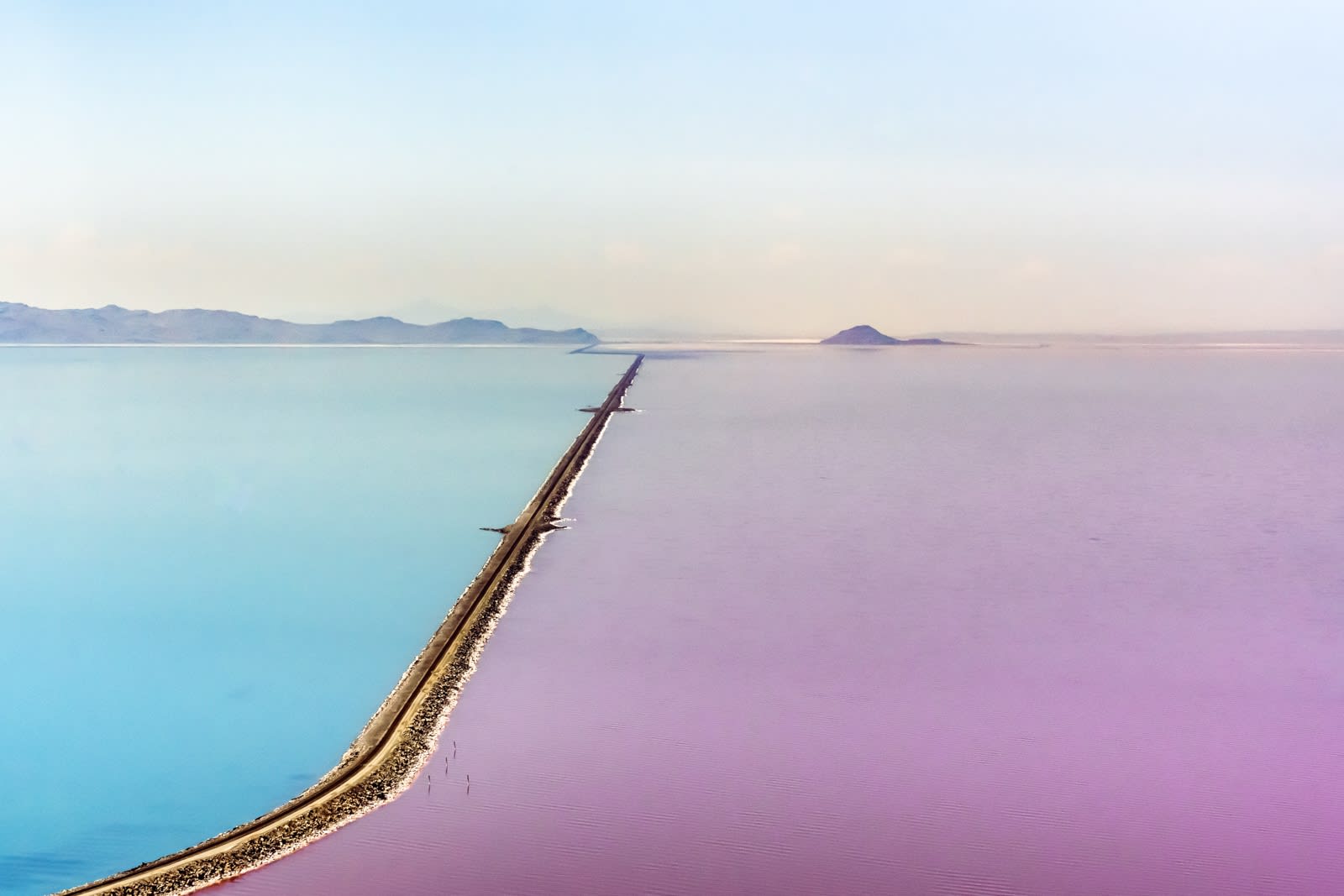
I flew back to NYC, developed my infrared film and viewed the few color images that I had taken. The colors were even more intense than I had remembered. I did some research and discovered Westminster College and Dr. Bonnie Baxter who was the expert on the Great Salt Lake. She told me that the colors that I was seeing were because of the lake’s composition. The Halophilic Bacteria was red because of its pigment which uses light energy to enable these bacteria to live and also to prevent photooxidative damage due to the abundance of UV light that the lake absorbs. The Great Salt Lake absorbs 15% more ultraviolet light due to its high altitude. Digital cameras at this time were having a hard time screening out ultraviolet light; therefore my images were incredibly vibrant. I returned that summer and spent two days photographing Utah, including the Great Salt Lake, Nancy Holt’s Sun Tunnels, the Bonneville Salt Flats, the desert and Bryce Canyon.
I fell in love with Utah and its variety of landscape and climates. Utah was formed by climate change and the Great Salt Lake is its barometer. This excursion resulted in my first color series: Salt Lake Reconsidered.
In 2022, I learned that this amazing lake was now two-thirds of its volume and that the Spiral Jetty was now in sand. I was compelled to return and re-photograph the lake.
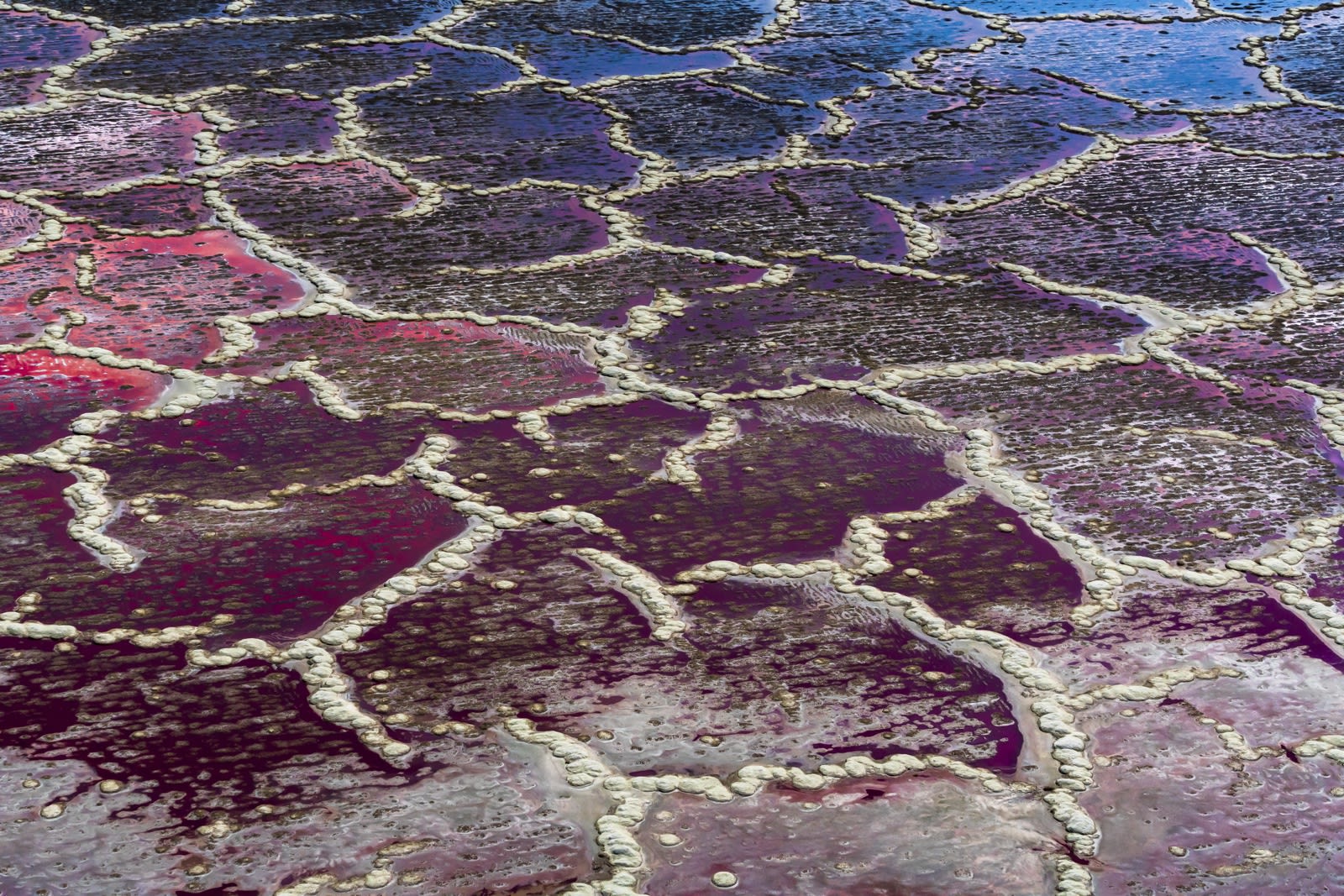
The Great Salt Lake's unique composition, with halophilic microorganisms, algal blooms, and diverse minerals, creates a vibrant kaleidoscope effect. High concentrations of salts and decreased lake volume intensify colors by influencing light refraction, scattering, and mineral composition.
The beautiful stone-like formations that you see in several of my images are Microbialites that have perished due to exposure to air and lack of nourishment from the lake's water. The black in several of my photographs is petroleum that is seeping up from beneath the lake. With my images, I aim to provoke a sense of awe and wonder. I continually endeavor to stimulate dialogue about climate change through my work.

What are you currently working on? Do you plan to continue researching or making work on the Great Salt Lake?
I persist in conveying the urgency of addressing climate change through my work. I encounter photographic opportunities in situations that demand attention and willingly embrace the challenge they present.
There are a lot of logistics involved and I carefully do research and plan extensively before I embark on a new body of work. An important cornerstone of my work is to make photographs that will instill a sense of wonder. I am interested in documenting the challenges faced by the Aral Sea in Uzbekistan, and am currently conducting ongoing research to discern the narrative within the photographs. Having already produced two short art films, I plan to create a third as part of this upcoming work.
As for the Great Salt Lake: What lies ahead for the lake in the next decade due to climate change? What other stories are waiting to be told? We need to wait and see.
